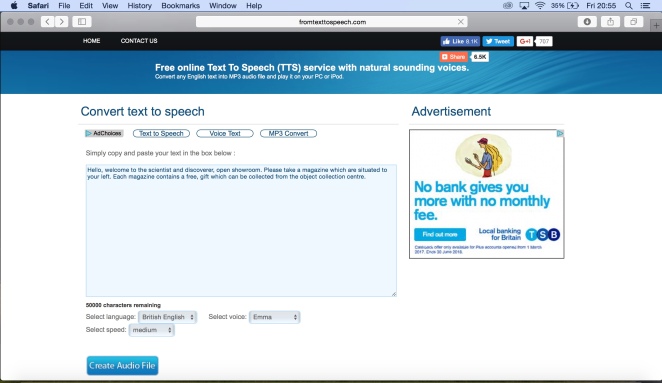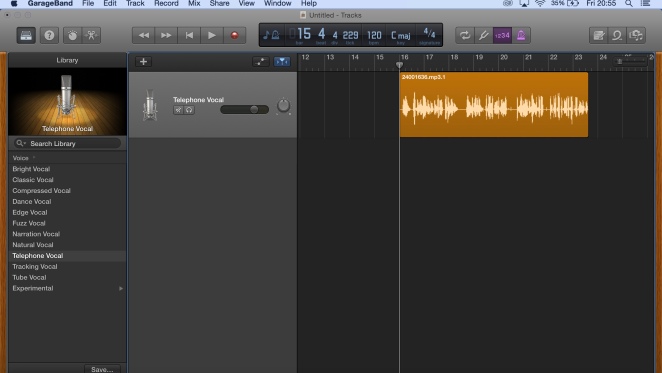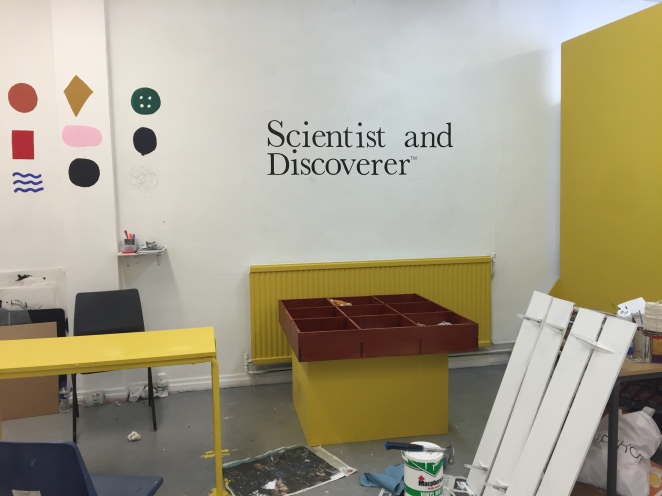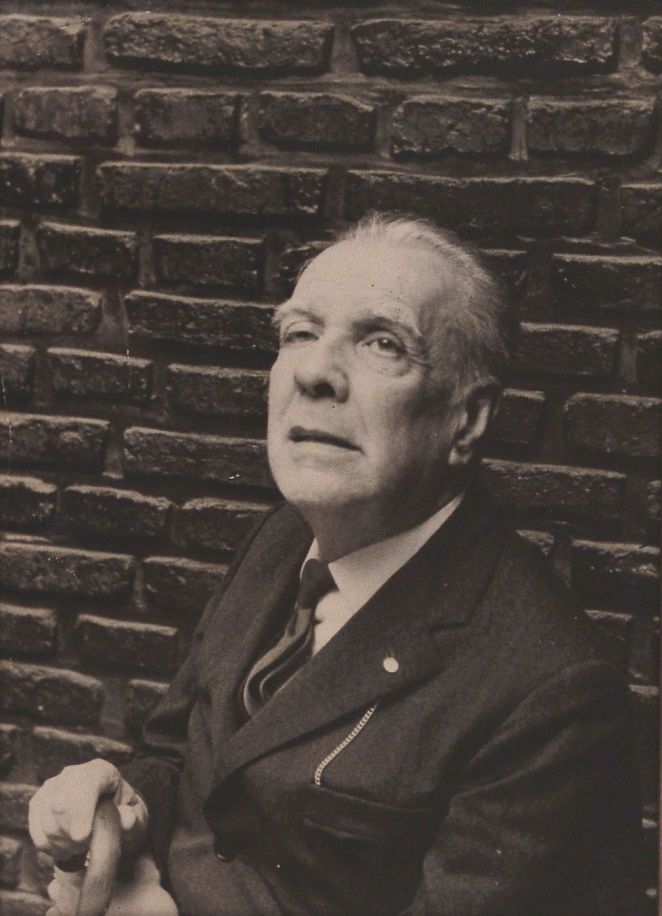
One must lie low, no matter how much it went against the grain, and try to understand that this great organisation remained, so to speak, in a state of delicate balance, and that if someone took it upon himself to alter the dispositions of things around him, he ran the risk of losing his footing and falling to destruction, while the organisation would simply right itself by some compensating reaction in another part of its machinery – since everything interlocked – and remain unchanged, unless, indeed, which was very probable, it became still more rigid, more vigilant, severer, and more ruthless.
Final Evaluation
VISUAL RESEARCH
Visually my art didn’t progress through the inspiration of artists’ work and it was certainly more the contextual research that the artists brought to my project. Although I did like the aesthetics of the artists I looked at, I didn’t want my piece to look like a piece of art and so looking at other aspects of the design was far more helpful to the progression of my project. Every time I began to take inspiration from artists such as Do Ho Suh, Jason Rhodes, and Mark Dion, the office space I wanted to create began to take a more sculptural form in my vision which is what I wanted to avoid. Branding everything with the logo and the yellow, adding office like elements, and ,particularly with the object collection centre, focussing on negative spaces were all things that can be visually inspired from the every day. We pass offices and advertisements almost constantly and so visual research was in abundance. Two artists that did directly influence the aesthetic were Massimo Uberti and the Fluxus Yearboxes. The negative space in Uberti’s sculptures captured this notion of the void for me and left space for human intervention: filling the spaces with imaginary perfection. It was also easy to incorporate this style into my initial idea as it can be seen as an art piece or simply a frame that states where my office begins and ends. The yearboxes inspired my meaning of life box visually and I guess this box was where all the aesthetic values that weren’t allowed to step into my office could be stored.
CONTEXTUAL RESEARCH
Contextual research consolidated its superiority over the visual research as I began to refine my project aims. I didn’t just want my art to be a copy of an existing artwork and the ideas and concepts behind the work are most important to my final outcome. I could have spent the whole project researching this area and there were so many avenues to explore it was sometimes difficult to know where to stop and focus. A main influence, artist wise, was Joan Fontcuberta who explores the notion of questioning the so called truths we’re told every day through creating his own fictions often linked to the field of science. My magazine is inspired by New Scientist. I used this as inspiration to explore the idea that scientific knowledge is seen as superior and because it is labelled ‘scientific’ it is somehow more reliable and accepted. Whilst exploring various artists such as Martin Creed, Piero Manzoni, and Marcel Broodthaers and reading books that explored the notion of a unsatisfactory life such as Butcher’s Crossing by John Williams and Consolations of the Forest by Sylvian Tesson, I soon realised much of the contextual research for my project came from the mediocre everyday. More specifically, that this mediocre everyday isn’t mediocre at all and that we shouldn’t just accept it without hesitation. My project is about breaking free from this ordinary view we have of the world and questioning why we’ve never questioned it before.
EXPERIMENTATION
Material experimentation was limited due to the fact my piece was largely conceptually driven and required more subconscious experimentation and refinement. I often found it useful not to overthink ideas as I wanted my outcome to be something familiar and rooted in reality. Especially when thinking about ways of displaying my object collection centre it was easy to create something too sculptural in my mind. By simply creating nothing the void like ambience I wanted to surround my work was achieved better than any material object.
Issues I encountered generally surrounded the fact that people are generally unwilling to interact with art not necessarily because the don’t want to but because they don’t know if they’re allowed. To eradicate this problem there will be a ‘scientist and discoverer’ office assistant sitting in my ‘office’ throughout the duration of the show in order to instruct people on what to do. I’m hoping this, along with the pretty self explanatory audio clip and arrows, will eliminate my worries. Another problem was money. I really did want the magazines to be priced in order to present this consumer driven world we live in but people just weren’t going to buy them. Even if the price was there for effect rather than the magazines actually costing money it was inevitable people would still be unwilling to interact. The magazines are now unpriced and as you enter you are greeted with a voice explaining you have been invited to the scientist and discoverer open showroom. Instead of pricing the magazines I added advertisements to the content inside as a way of discussing consumer society. I wanted the advertisements in my magazine to be reminiscent of the real world and adverts we regularly engage with so I used kinder eggs and Father John Misty instead of deep, ostentatious literary references. This was often difficult for my self absorbed, pretentious being to process but I’m sure Jorge Luis Borges loved kinder eggs. ❤
IDEA DEVELOPMENT
My ideas developed quite drastically from my initial thoughts when I proposed my idea. I thought the outcome would be sculptural and object driven with the element of the magazine. However, as soon as I began research I knew I needed to create a set around the elements I had proposed.
Initially this was going to consist of one installation: the scientist and discoverer office. But I wanted it to be even more interactive and people driven and so I decided to add a second installation: the object collection centre, where people would ‘collect their object’ from the magazine. Initially I was going to have a different magazine for each object however logistically it was easier to have one magazine explaining all the objects. This also allowed me to add the element of chance/luck to my magazine. Before the magazine is obtained it us unknown to the customer which free gift they will receive. To compare my artwork to real life examples of fulfilment I began to collect kinder eggs mid way through my project. The complete collection of toys are displayed in the Scientist and Discoverer showroom as well as there being a kinder egg advertisement inside my magazine. I didn’t really want the toy inside but much like my magazine’s ‘free gift’ I didn’t know what I was going to get and completing the collection gave a sense of fulfilment. I wanted the kinder eggs to represent how collections of a larger scale/value can be a life long endeavour. Towards the end of the project when the main elements were confirmed I wanted to make sure details were added to both add to the scientist and discoverer brand and explore my theme further. I added things such as scientist and discoverer tshirts, name plaques, an audio clip, and wrote ‘This pillar contains 39 cauliflowers’ at the entrance to the ‘showroom’ to explore the notion of truth and questioning what we willingly believe.
FINAL PIECES
My final piece does follow my statement of intent however that was quite vague as I was unsure about what direction my final outcome would take. The main installation I have created is the ‘Scientist and Discoverer’ showroom which is a set built to look like an office type room where people will be invited to take a magazine and see which free gift they have acquired. There will be instructions leading them to my second installation the “object collection centre” where they will be told their object will be available. However, when they visit it is almost non existent to discuss the unrealistic nature of this ideal. As this discussion regarding the illusory nature of the meaning of life was one of the main points of exploration in my project I feel the addition of this 2nd installation was essential in the success of my outcome. All hope is eradicated as the viewer begins to process their object will never be available and the meaning of life is non existent. We’re just floating around in space with no purpose or direction but that’s okay sometimes.
PRESENTATION
Initially my mind was focussed on the box that would ‘present the meaning of life’ however as I began my research I realised that their was room for much more scope and I needed to think bigger. I was going to create posters to advertise my ‘Scientist and Discoverer’ magazine with the box placed on top alongside the magazines but I soon realised to most effectively present my ideas I needed to stop focussing on displaying my work as an art object and build a set around my concept. An interactive element proved to be essential as my idea focusses around people and the fact they are willing to accept and believe. For the ‘object collection centre’ again i focussed far too much on presenting it as art. I wanted to create a void like structure that contained nothing however many of the ideas I initially thought of looked far more sculptural than I wanted. Instead I am using an existing space which is far more effective.
Presentation ideas were largely based around the office aesthetic and also a very in your face brand. Everything is branded with the Scientist and Discoverer logo and yellow. The Scientist and Discoverer font is also continued downstairs in the Scientist and Discoverer Object Collection Centre. I wanted to depict the constant harassment we’re faced with every day, the countless absurd advertisements we don’t even realise we’re passing.
An issue I encountered in regards to presentation is that somebody stole my orange from the object collection centre. The next day I replaced said orange and to my utter disgust I discovered a few hours later the replacement orange had been trampled on by hooligans. This made me very upset indeed.
FINAL REFLECTION
I am pleased with the outcome of this project even if there were more directions to be explored; I’m sure in another future a different version of myself is still exploring this theme. As well as discussing the meaning of life, my project explores what art can be, and encapsulates the notion of belief and questioning authority. Perhaps we need to take every office, advertisement, and brand and place it in an ‘art setting’ for people to realise what an awful, consumer driven world we live in. Perhaps this authority is truly inaccessible.
What I have learnt is that everything is an illusion until you can prove otherwise and this evaluation could prove completely pointless because we might not even exist. “Time perpetually forks towards innumerable futures. In one of them I am your enemy*.” …In one of them this evaluation was never written. I do hope whoever reads this is contained within the future where I have painstakingly typed all this ramble. I can’t even begin to put into words the torment that would overcome me if I had actually written this for just me because I most certainly would not have even started. I also have yellow paint all over my clothes.
*Jorge Luis Borges
Peer Reviews with Sarah Clark and Madeleine Whitfield

Sarah Clark.
What does the colour yellow mean to you?
Sunshine, this isn’t really sunshine this is mysterious sunshine.
Do you view this as an office or art?
Art, I view a lot of things as art though
Orange, kite, button, thread, juice carton, soap, balloon, puddle water, plate?
Puddle water
And what does puddle water mean?
Well, it looks a lot more exciting in your box of life
Is it puddle water?
No
Well so you’re lying to every body?
Well that’s the fucking point Sarah
I don’t even know what’s real or not anymore
Madeline Whitfield
What does the colour yellow mean to you?
The colour yellow means nothing to me
Do you view this as art or as an office?
Art
Orange, kite, button, thread, juice carton, soap, balloon, puddle water, plate?
Soap
And, what does soap mean?
Soap means being clean
Time Plan
Week 1-
Research Andy Warhol’s time capsules, Fluxus, ‘the meaning of life.’
Finalise ‘scientific discoveries’/stories.
Journal
sketchbook work
Week 2-
Finalise what materials I need for my objects and begin to source them.
Plan how big I want my box to be/how I will make it.
Journal
Continue sketchbook work
Week 3-
Begin to make objects.
Source wood for box.
Journal
Week 4-
Easter
Continue making objects
journal
sketchbook work
Week 5-
Easter
Continue making objects/ begin to design magazines
journal
sketchbook work
Week 6-
Make box
journal
sketchbook work
Week 7-
continue designing and being to make magazines.
Get some objects for magazines
journal
sketchbook work
Week 8-
Finalise how I will present my work.
Continue making magazines
journal
sketchbook work
Week 9-
Assemble installation
Get remaining objects
journal
sketchbook work
making the audio
for the showroom i want an audio clip to play while customers enter

I added an effect in garageband to make it sound like it was being spoken over a tannoy.
update #4 06/05/17
I have started to create the Scientist and Discoverer showroom as pictured below. To separate the installation from the rest of the room I am also going to create a doorway type structure next week.

I can’t get bricks 😦
It will be too expensive to obtain the amount of bricks I need however the object collection centre may actually be more effective without them as a lot of people will be unwilling to interact and they can’t miss it if it is in plain sight. The object collection centre will contain a single orange illuminated by an angle poise lamp.
How To Get People To Interact.
A recurring issue that keeps appearing is that the general public are unlikely to actually interact with my installation. If nobody took a magazine the whole concept would be pretty pointless. To fix this I am going to have instructions on the wall on arrival and also a Scientist and discoverer office assistant, Alex, who can assist people on what to do. As well as Alex being there I want to create an audio clip instructing people what to do as they walk in perhaps accompanied by some ambient music.
I wanted the magazines to have a price on them however I thought people might not take them so they will be free. When people walk in they will be informed that they have been invited to the ‘Scientist and Discoverer open showroom.’
personal reflective review
Interim Review.
I want to explore the compulsion a lot of us possess in regards to searching for meaning or purpose in our lives and present this as an unattainable goal. I have created a fake magazine company, Scientist and Discoverer, which claims to have discovered the meaning of life. The contents of the magazine reads:
“We all crave a meaningful life that we’re content with. But what does that really mean? In this special edition of Scientist and Discoverer magazine, 43 years of research comes together to present the meaning of life. Laura Emsley, scientist and discoverer, has spent her life dedicated to finding what it means to be alive, why we’re here, and what will give us a sense of purpose and fulfilment. A collection of 9 objects, one of which has been created specially for Scientist and Discoverer, hold the key to our existence and happiness. This issue outlines what each object is and why it is important for our perfect life. Each magazine contains a free gift: one of the 9 objects. To find fulfilment and satisfaction collect all 9.”
Each object addresses certain aspects of my project that I am exploring such as: favouring consumeristic values, the quest for discovery and explanation, being forgotten, what the human brain will believe, craving the lives of others, and being in control. Although what defines a meaningful life is subjective the same 9 objects are allocated to everybody to discuss how in today’s society we value certain ways of life over others eradicating individuality.
The main components I initially began with were the magazines and a large scale box which contains models of the 9 objects. The large scale leads to connotations of importance and by not using the actual objects in the box it suggests the unrealistic nature of the ideal. I was going to present the box on the floor alongside the magazines with some posters however I soon realised I needed to create a set on a much larger scale to most effectively present my idea.
The final plan is to make 2 separate installations.
#1 – The ‘Scientist and Discoverer’ showroom-esque type room which will be a set I have created containing the magazines and the box.
#2 – In the ‘Scientist and Discoverer’ showroom there will begin a trail of arrows leading to the next installation: The object collection centre. The magazine will contain a loose piece of paper explaining which free gift the ‘customer’ has acquired and instructs them to collect it from the ‘object collection centre.’ This ‘object collection centre’ will be almost non existent.
The plan was that people would take a magazine and follow the instructions to the object collection centre where the unrealistic quest for the perfect life is presented to them. However, as is the case in a lot of my work, the public are generally unwilling to interact. If nobody takes a magazine the whole concept will be lost. To fix this I am going to have a Scientist and Discoverer office assistant, Alex, who can assist people on what to do. As well as Alex being there I want to create an audio clip instructing people what to do as they walk in.
I also wanted the magazines to have prices on them however this would just add to the issue of lack of interaction. Instead the magazines will be free and when people walk into the room they will be informed they have been invited to the ‘Scientist and Discoverer open showroom’ .
The magazine epitomises the notion of buying into a lifestyle. We may not want the physical magazine but crave the life of this imaginary being we can see ourselves becoming if we continue to buy into the brand.
As I had eradicated the prices from the magazines I needed a new way to discuss consumerism in my work. In today’s society, wealth and possessions are certainly favoured traits that may be linked to a ‘meaningful life’.
I have included 2 advertisements in my magazine: Father John Misty’s new album ‘Pure Comedy’ and Kinder Eggs. A theme Father John Misty explores in his new album is consumerism, particularly in his song ‘The Memo’. I’m using the opening lyrics as both an advertisement and as an ‘artwork’ on the wall in the Scientist and Discoverer showroom.
Kinder Eggs
I started buying kinder eggs every day before college a few weeks ago and the complete collection of toys will be displayed in the Scientist and Discoverer showroom as well as there being a kinder egg advertisement in my magazine. I didn’t really want the toy inside but much like my magazine’s ‘free gift’ I didn’t know what I was going to get and completing the collection gave a sense of fulfilment. Collecting kinder eggs may not give us a sense of belonging or purpose but certainly collections of a larger scale/value can be a life long endeavour. Even from a young age we’re thriving for fulfilment through consumerism.
Joan Fontcuberta explores the idea that scientific knowledge, seemingly reliable information, is often just accepted. Using the respectable setting of a museum/gallery etc gains trust but why shouldn’t we question it? As a species we are willing to believe because we seek knowledge and value knowledge as something that would fit into the category of a meaningful life. Joan Fontcuberta blurs the boundaries between what is real and what isn’t and why we shouldn’t just accept things.
“The idea is to challenge disciplines that claim authority to represent the real- botany, topology, any scientific discourse.”
“Believing is more comfortable because unbelieving implies effort, confrontation. We passively receive a lot of information from TV, the media, and the internet because we are reluctant to expend the energy needed to be skeptical.”
By presenting my work as a scientific discovery alongside a professional looking magazine with the illusion of popularity, it makes the fictions I have creates more reliable and believable. Much like Mary Kelly’s ‘Vox Manet’ which roots its lies in reality to seem legitimate and Marcel Broothaers ‘Department of Eagles’ using the respectable setting of a museum to gain trust.
Andy Warhol’s time capsules discusses similar themes I want to portray in my work. It suggests fear of being forgotten and not wanting to be left behind. We may feel the need to live a ‘meaningful life’ in order to make existence less futile and be remembered even when we die. By keeping and boxing these objects for future generations it gives the illusion of importance.
“Warhol thought his desktop sweepings were valuable, and perhaps in viewing them as such, they became art.”
The box suggest connotations of where you may keep important objects/collections.
Visually, the Fluxus movement certainly inspired the box idea with their ‘yearboxes’ and George Brecht’s ‘Games and Puzzles’. Contextually it also links to the idea of the readymade/found object as art, linking arbitrary objects to our memories, and giving insignificant objects the ability to document our lives.
